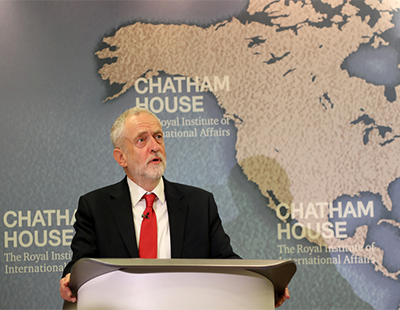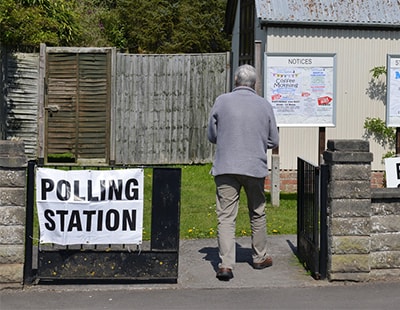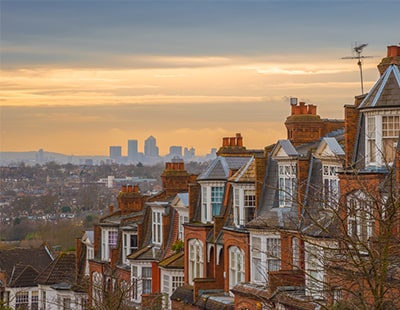Like many of Labour’s recent policy proposals, its call for rent controls leaves more questions than answers.
There has been widespread criticism of the idea from our industry. There is certainly substantial evidence that controls have seriously unhelpful side-effects - a long-term fall in return means landlords are less likely to invest, more might drop agents in a bid to save money, and at worst supply may diminish as landlords quit the lettings sector completely.
But the glib labelling of such a policy as Marxist, left-wing or Corbynite is more than a little wide of the mark. Rent controls in the past have been adopted in this country, often with enthusiasm, by political parties of all colours - and it’s interesting that they appear to have their origins in periods of acute housing shortage, not dissimilar to Britain today.
Research by the House of Commons Library suggests that the first government-backed rent control came in The Increase of Rent and Mortgage Interest (War Restrictions) Act 1915, which restricted private and public housing rents to their August 1914 level.
“The Act was designed to prevent landlords from profiteering during the war years when demand for housing exceeded supply” says the Library.
Although sketchily policed (it’s not just the modern era where regulations appear not to be enforced) this provision actually stayed in place after World War One and only started to be relaxed in the 1920s and 1930s. At that time a series of complex ‘decontrol’ rules came into effect - some specifying the rent chargeable across three different categories of homes, sometimes linked to new rights of landlords to repossess their properties, although often this was only if they secured appropriate accommodation for the tenant elsewhere.
Creeping relaxation continued until the outbreak of World War Two when The Rent and Mortgage Interest Restrictions Act 1939 was introduced; it was back to square one with almost complete rent controls reintroduced.
The housing shortage created by WW2 led to The Building Materials and Housing Act 1945, which again strictly controlled rents. A series of other post-war laws introduced concepts like the rent tribunal to fix some rents and arbitrate in some disputes.
It was in 1957 when, arguably, party politics began to define rent control policies.
The Conservatives’ Rent Act 1957 allowed previously-controlled rents to be based instead of gross property values; house appreciation in that era was not at all as great as in the past 30 years so that did not necessarily lead to high rent increases.
However, controls were off and - many thought - were never to return.
But after stories about landlords such as Peter Rachman (younger readers, please Google him - a notorious slum landlord) Labour’s Rent Act 1965 introduced regulated tenancies and so-called ‘fair rents’ set by independent rent officers. Matched by Labour’s Protection from Eviction Act 1964, the landscape was changing with a return to stronger controls.
The House of Commons Library’s research on the subject does not beat around the bush about this period. It says: “The application of rent controls coincided with a decline in the private rented sector. The sector had made up nine-tenths of the housing stock in 1915 but had reduced to one-tenth by 1991.”
Two new factors in the 1960s and 1970s - increased home ownership and alternative investments for the newly-wealthy - played a part, too, but the correlation between controls and decline appears hard to ignore. In the 70s, governments led by Heath (Tory) and Wilson and Callaghan (Labour) added additional complexity but no loosening of controls.
The real switch to deregulation came late in the Thatcher era and throughout John Major’s Tory governments of the 1990s with the arrival of the assured shorthold tenancy, the growth of buy to let, the swinging of the pendulum to landlords from tenants, and the rise of the private rented sector once again.
The rest is familiar recent history: the private rented sector is now the second largest tenure in the UK, and still growing.
Whether we return to an era of rent controls, caps, limits or index-linked rises depends to some extent on the next general election: the current Tory housing minister has said no to rent controls while Corbyn is an enthusiast.
However, the UK is a more nuanced place these days. Both SNP-controlled Scotland and coalition-controlled Northern Ireland are taking action to restrict rent increases in certain circumstances; Labour-led Wales has hinted it may do something similar.
And anyhow there are plenty of Labour policies, or those of a Labour hue - like the fees ban, licensing, the stamp duty surcharge and phasing out mortgage interest tax relief for buy to let investors - which have been enthusiastically appropriated by the Conservatives.
So are rent controls of some kind on their way back? I wouldn’t be surprised... but no matter what the current housing minister says, it’s not impossible that the Conservatives may get there before Corbyn.
*Editor of Estate Agent Today and Letting Agent Today, Graham can be found tweeting all things property @PropertyJourn

























Join the conversation
Be the first to comment (please use the comment box below)
Please login to comment